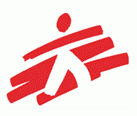Geneva/New York—Patent barriers and high prices on oral treatments for hepatitis C could make it too expensive for developing countries to scale-up diagnosis and treatment of the disease, said the international medical humanitarian organization Doctors Without Borders/Médecins Sans Frontières (MSF) today. The warning comes as the World Health Organization (WHO) issued the first-ever guidelines for treatment of hepatitis C virus (HCV).
The new guidelines strongly recommend treatment using sofosbuvir--one of two direct-acting antiviral oral medicines which has recently come to market--for several genotypes of the disease in regimens that either eliminate or reduce the need for current treatment known as pegylated interferon. Sofosbuvir is marketed by Gilead and has a prohibitive price of $84,000 for 12 weeks of treatment, or $1,000 per pill.
“The price Gilead says it will charge for sofosbuvir in developing countries is still far too high for people to afford,”said Rohit Malpani, director of policy and advocacy for MSF’s Access Campaign. “When you’re starting from such an exorbitant price in the US, the price Gilead will offer middle-income countries like Thailand and Indonesia may seem like a good discount, but it will still be too expensive for many of these countries to scale-up treatment.”
Simeprevir, another direct-acting antiviral to treat hepatitis C costs around $45,000 for 12 weeks’treatment in Russia, and sofosbuvir could be priced as high as $5,000 in Thailand. At these prices, access in middle-income countries –where 75 percent of the world’s poor actually live –is likely to be extremely limited.
“The new WHO guidelines give countries a road-map for screening and treating a disease which affects 150 million people worldwide,”said Dr Jennifer Cohn, Medical Director for MSF’s Access Campaign. “The critical aspect now is implementing these guidelines. This hinges on ensuring that access to new drugs and diagnostics is not hampered by patent barriers that undermine low-cost generic supply.”
Current hepatitis C treatment involves using pegylated interferon, which is not only expensive, but is also complex in resource-limited settings. Pegylated interferon can cause side effects so severe that some people stop treatment early and others are deterred from even starting. The limitations of current treatment mean countries have been reluctant to address HCV, and have even hindered MSF’s ability to respond to the disease, with only a small number of people on treatment in India.
It is possible to produce direct-acting antivirals generically in India and market them at very affordable prices, just like antiretrovirals (ARVs) used in the treatment of HIV, said MSF.
Already, civil society groups have filed patent oppositions in India to ensure affordability and generic production of these medicines. A study by researchers at Liverpool University has found that a twelve-week course of sofosbuvir would cost $68-$136 to produce. It’s possible that diagnosis and treatment together could cost as little as $500. Gold-standard diagnosis and first-line treatment for HIV today costs under $200 per person per year; just over a decade ago, HIV treatment alone cost as much as $10,000 per person per year.
“Bringing the price down will be critical to scaling-up treatment, so if the cost of drugs are unaffordable, countries should use all the legal means available to ensure affordable access,”said Leena Menghaney, India Manager for MSF’s Access Campaign. “With 12 million people estimated to be infected with chronic hepatitis C in India, there’s a lot at stake.”




